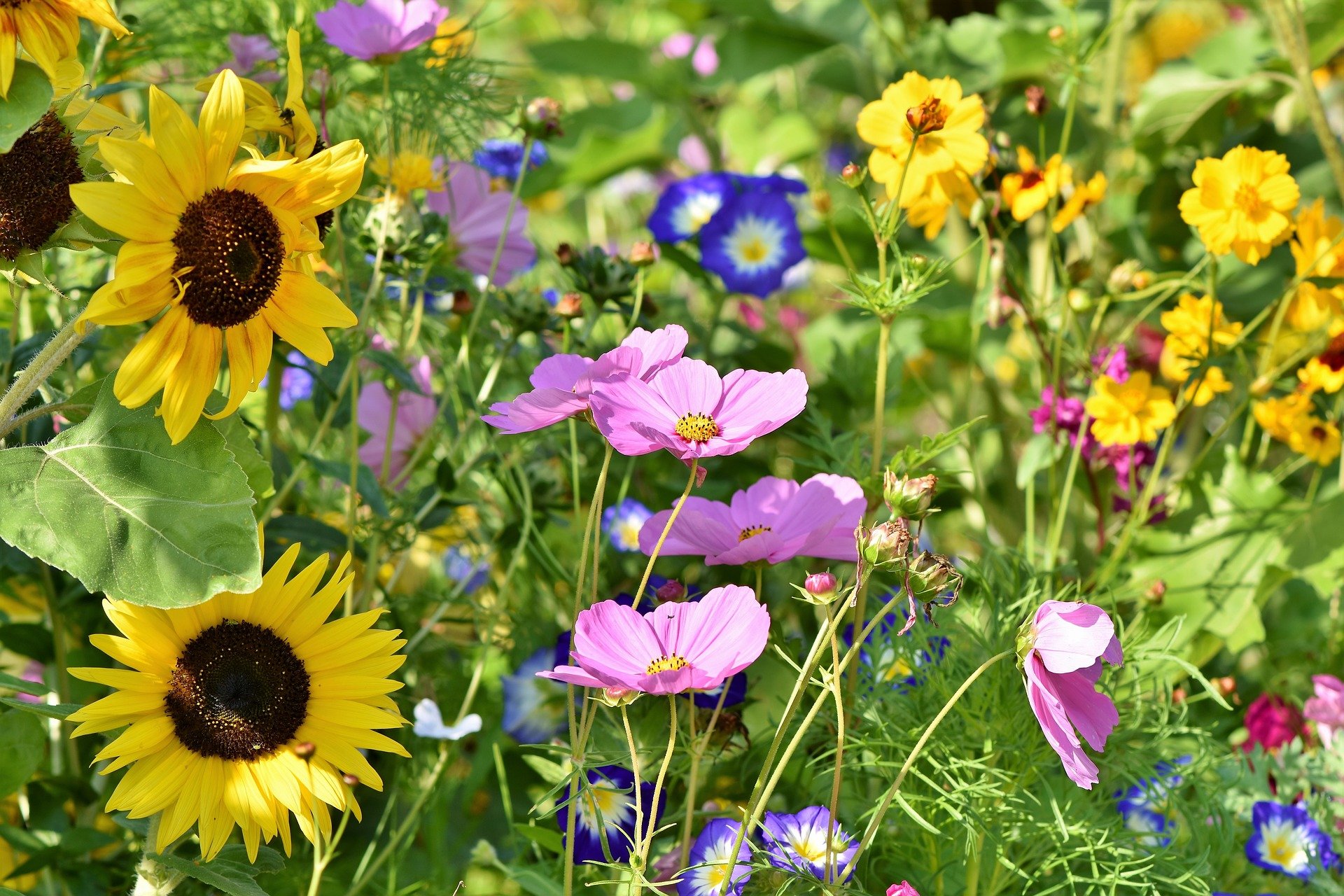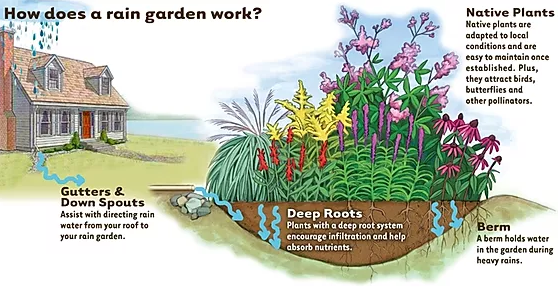News

Rain Gardens 101
By: Marianna Quartararo, Resource Conservationist, PCCD
Storm water run-off contains fertilizers, pet waste, petro chemicals, and other pollutants and accounts for approximately 70% of the pollutants that enter our waterways and wetlands. This non-point source pollution impacts our drinking water and the ability to maintain healthy waterways. In order to filter this water and recharge groundwater, we need to find ways to manage the run-off and the non-point source pollution it carries. One way to do this is by installing a rain garden.
A rain garden is a bowl shaped depression designed to capture, hold, and absorb rain water within 24-48 hours. Rain gardens are a landscape amenity combining beauty and function to reduce pollution that provides the following benefits:
- Act as a sponge and filters storm water
- Infiltrates up to 30% more run-off than a conventional lawn
- Requires less maintenance than a lawn once established- no need to mow, fertilize or water it
- Provides habitat for pollinators and wildlife
- Reduce flooding and pollution to your local waterbodies and replenishes groundwater
When choosing the location for your rain garden, determine where drainage issues are; you do not want to site it where the soil is compacted or composed of heavy clay so water will not infiltrate into the ground. Determine where water from downspouts and paved areas naturally flow as this will be a good location for the rain garden. The area will need to be as level as possible to avoid pooling in one area. Plan where storm water may go into the basin by directing it to a grassy or wooded area or to existing storm water drains. Do not disturb existing treed areas as these are the best natural areas for water to infiltrate. Locate the rain garden at least 10’ from any buildings, with 30’ being preferable. You will also need to determine the “drainage area” of your roof and paved area that will drain to the rain garden in order to size the rain garden correctly. Check the native soils in the area to be used to determine if any amendments are need to improve the drainage.
Plant selection depends on the growing conditions; amount of sun and shade, excess wind, and the reflection of surrounding buildings. The use of native plants is preferred as this increases the habitat for native pollinators and birds and will add to the beauty and diversity of the planting. A variety of herbaceous and woody plants that can take “wet feet” as well as drought tolerant plants are needed depending on where they are planted in the rain garden. Mulch the plantings to control weeds and retain moisture to aid the plants in establishing. To learn more about rain gardens, watch our webinar Homeowner Tips to Protect Clean Water.
A raingarden can be an asset to your property that helps clean and infiltrate water as well as providing a home for our native pollinators and feathered friends.
